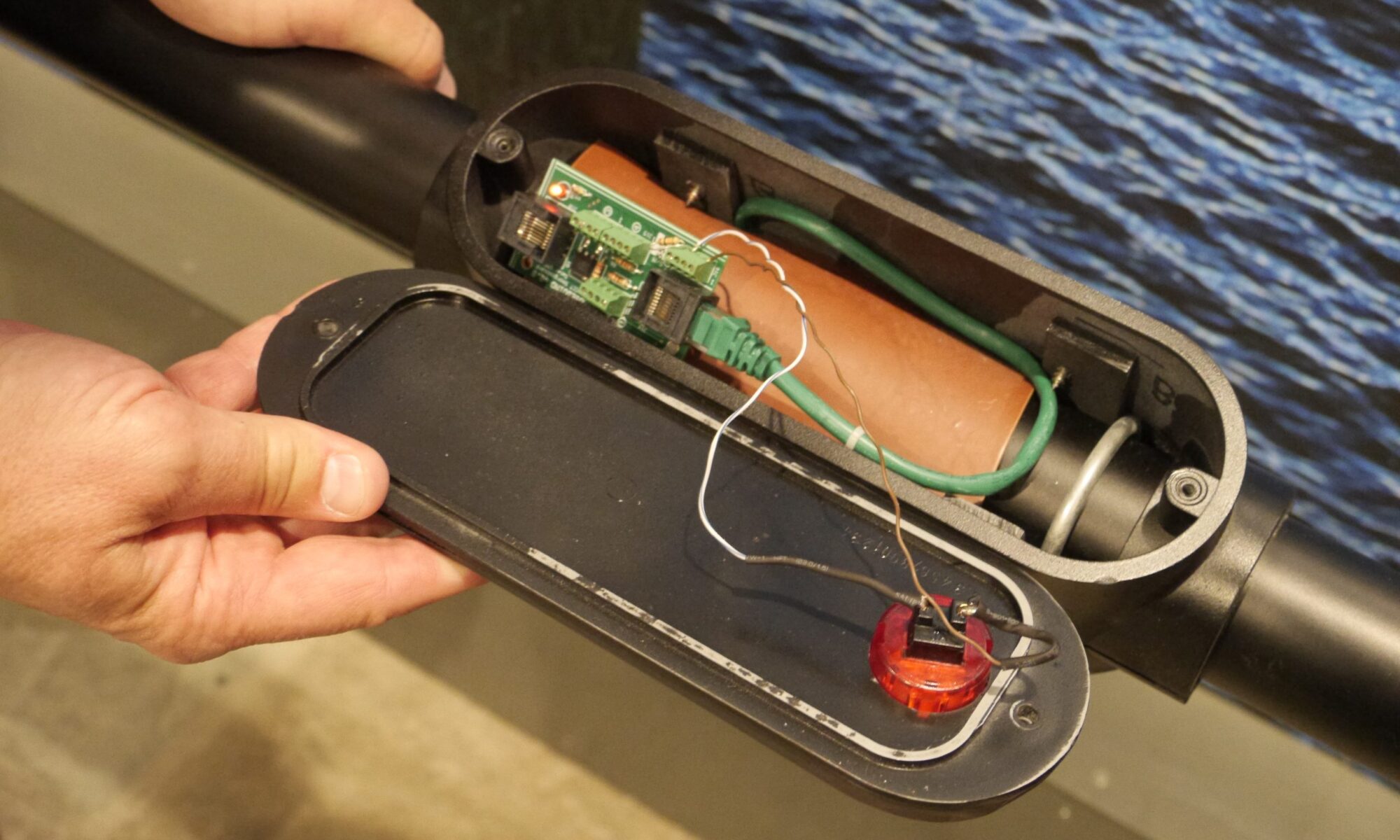Copper on green glass
Moving electronic thoughts
To cabled lightposts
Schematics
Shield: Museduino Schematic v1.5 p1
Smorgasboard: Museduino Schematic v1.5 p2
External Power: Museduino Schematic v1.5 p3
Features
Museduino Shield
Distributed I/O
The Museduino distributes 5 different Arduino pins on ports A, B, C, or D labeled on the shield. A satellite (S) connected on either port allows access to the specified Arduino pins used for sensors/actuators.
| satellite pins (s) | satellite pins (s) | A | B | C | D |
| smargasboard | external power | j5 | j6 | j8 | j7 |
| j14 | j19 | A0 | D13 | A2 | A4 |
| j16 | j20 | A1 | D12 | A3 | A5 |
| j12 | j21 | * D8 | D11~ | D5 | * D2~ |
| j15 | j18 | D7 | D10~ | D4 | D1 |
| j17 | j23 | D6~ | * D9~ | * D3~ | D0 |
The shield and satellite boards have a labeled solder mask to assist with configuration.
PWM Switches
The Museduino allows distributed PWM pins to switch between ports. For example, pin D9~ on port B can switch places with pin D8 on port A. Pin D3~ on Port D can also switch with Pin D2 on port C. This feature is useful when you need an extra PWM pin to be accessed from a Satellite board.
External Power Jumpers
The Museduino shield includes a jumper which allows for choice in power supply: 5V from the Arduino or an external source.
Satellite Boards
Smorgasboard
Named for its smorgasbord qualities, this satellite board allows for a wide range of sensor and actuator configurations on any port.
External Power board
The External Power board is designed for sensor and actuators that require their own external power supply (NeoPixels, DC Motors, etc). Since satellites connected via CAT5 cables can be as long or short as needed, this board is particularly useful for large-scale installations.

